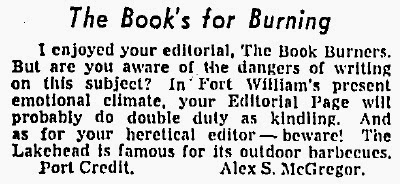It sure been a hard, hard winter, my feet been draggin' 'cross the ground. And so I hibernate, sleepily absorbing what I can of the world outside. Last weekend it was Intent to Kill, the screen adaptation of Brian Moore's disowned thriller of the same title, sent my way by Noah Stewart of Noah's Archives.
In January, I wrote a bit about the film, the first of six features based on Brian Moore novels, suggesting that screenwriter Jimmy Sangster had been quite faithful to the original. Back then I had nothing to go on but the trailer.
Turns out I was right, though the opening sequence is incongruous. We begin with an ambulance racing along what was then Dorchester Boulevard. Destination: Dorval Airport.
Once there it picks up Juan Menda (Herbert Lom), president of an unnamed South American country, who hopes that Montreal brain surgeons will save his life. The shots that follow – which have nothing whatsoever to do with the book – capture a good deal of a city that is more than half a century gone.
At one point the camera swings past one of my old student apartments, but I won't trouble you with things sentimental. Look! There on the left! Those are McGill's Roddick Gates!
As in Jésus de Montréal – The Greatest Canadian Story Ever Told – the ambulance takes a false route. In this film it ends up at the Montreal General Hospital, which serves as a stand in for the fictitious Canadian Neurological Institute.
Three men intend to kill in Intent to Kill, but they aren't the only villains. In book and film selfish wives betray spouses. Margaret McLaurin (Catherine Boyle), pressures her doctor husband Robert (Richard Todd) to abandon his practice for a position in London working for one of her many paramours.
 |
| "I can't stand it here. I loath it. I hate Canada!" |
 |
| "I hate this country. It's so cold." |
The man even walks to work.
Here young Dr Robert passes the Windsor, the very hotel at which the assassins are staying.
The first of all the grand Canadian hotels, the Windsor closed its doors when I was a teenager. I have my doubts that its bar was as depicted in the film.
That's a young Jackie Collins at right in one of her few screen roles.
It's beautifully filmed – as you'd expect in a movie directed by Jack Cardiff – but is something not a bit off? Montreal's Strand was on St. Catherine Street, which seems awfully narrow here. I don't remember the theatre at all, probably because by the time I was old enough to go to the movies it had been transformed into a porn cinema called Pigalle. The building was torn down in 1973 to make way for the Centre Capitol.
I like to think that Intent to Kill showed there – sometime between Rodan and Use the Back Door.
A warning: Jack Cardiff's Intent to Kill is not to be confused with the straight-to-video 1992 Traci Lords vehicle of the same name.































































